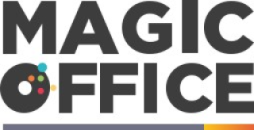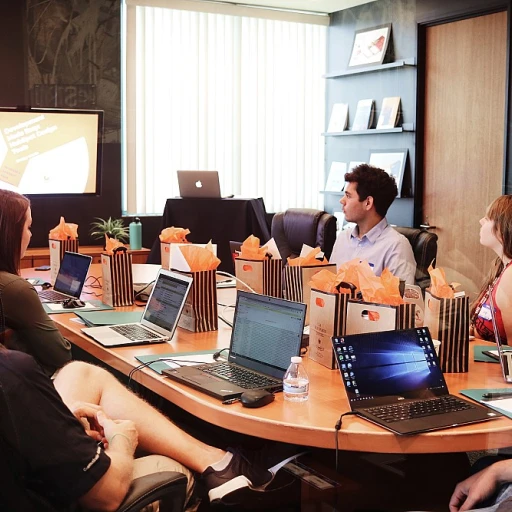
Understanding the Design Process in Arabian Emirate Companies
Comprehending the Workflow in Arabian Context
Understanding the design process in Arabian Emirate companies is fundamental to efficiently managing and optimizing workflows. These organizations often involve complex procedures that demand synchronized coordination and meticulous oversight. Complementing the collaborative efforts of team members, this strategic approach guarantees a seamless execution of the design journey with minimal disruptions. To appreciate the dynamics of design management, a few elements are essential:- Diverse Collaboration: A range of team members often engages in different facets of the design process, enabling the distribution of tasks and contributing towards meeting project objectives.
- Role of Systems and Services: Modern-day design process flow leverages technological advancements and systems such as ticketing to aid the management of support requests, ensuring responses are timely and efficient.
The Role of Ticketing Systems in Design Management
The Importance of Efficient Process Management through Ticketing Systems
In the dynamic business environment of Arabian Emirate companies, managing the design process requires precision and effective coordination. Ticketing systems have emerged as integral tools in this context, offering a structured approach to handling design phases and enhancing overall management.
One of the primary benefits of ticketing systems is their ability to streamline the process flow. By organizing tasks into distinct tickets, design teams can efficiently track progress from inception to completion. This methodical arrangement aids in ensuring that customer requests and support issues are handled promptly, reducing delays and improving customer satisfaction.
Another aspect where ticketing systems shine is in service management. Each support ticket captures vital data about the issue, allowing for a comprehensive knowledge base that future team members can refer to. This process not only helps resolve present requests but also equips teams to anticipate and mitigate potential challenges, leveraging past experiences.
Moreover, utilizing ticketing systems elevates the level of customer support offered. By centralizing tasks on a service desk, an organization can ensure that every support request is assigned, monitored, and addressed efficiently. The system provides a platform for team members to communicate, creating a collaborative environment that enhances problem-solving.
Additionally, time management becomes more effective as teams can allocate resources based on ticket priorities, ensuring that critical tasks are prioritized for swift completion. This ensures a seamless alignment between team members and customer service objectives.
Implementing a ticketing system can indeed transform how support desks operate within a business, leading to improved efficiencies. For more insights into optimizing system use and ensuring meetings contribute meaningfully to company goals, visit effectively concluding meetings in an Arabian Emirate company.
Tracking Phases of the Design Process
Organizing and Tracking Steps Effectively
In the design process, particularly within Arabian Emirate companies, efficient management of various phases is essential. Ticketing systems provide an organized approach to track each step comprehensively, enhancing clarity and aiding in systematic execution. By maintaining a clear process flow, project teams can easily identify the current phase, understand upcoming tasks, and streamline operations. Utilizing a ticketing system offers a robust framework that captures all necessary data for each design phase. This structure allows for efficient issue resolution as any support ticket logged in the system provides detailed context and history. With this, the support team can coordinate better through the help desk, ensuring timely responses and mitigated challenges. To manage this effectively:- Create Detailed Tickets: Each task or issue should be logged as a support ticket with descriptions, expected outcomes, and deadlines.
- Assign Team Members Appropriately: Allocate specific tasks to relevant team members based on expertise, ensuring responsibility and accountability.
- Regular Updates: Encourage updates and progress notes within each ticket to foster communication and keep everyone informed.
Implementing a Ticketing Form for Design Phases
From Concept to Implementation: Structuring Your Ticketing Form
Utilizing a ticketing system effectively involves establishing a comprehensive ticketing form that manages each phase of the design process. This structured form plays a pivotal role in aiding the team to log design requests, track progress, and resolve issues efficiently. Incorporating a clear and detailed form within your service desk or help desk system is crucial. The form should gather essential ticket data and categorize support tickets based on the design phase they pertain to. This level of detail helps in understanding the support requests and assists in planning the next steps. Team members can input the specifics of each request, including description, priority level, and any attached resources necessary to take action. Key components to include in a ticketing form:- Issue Description: Clearly articulate the issue or request, facilitating swift resolution.
- Priority Level: Allocate urgency to the ticket to ensure timely management and customer satisfaction.
- Design Phase: Identify which phase of the design process the ticket relates to, be it initial concept, development, or final review.
- Attachments: Include any relevant files or documentation, ensuring all team members have access to the necessary information.
Challenges and Solutions in the Arabian Emirate Context
Addressing Obstacles in Implementing Ticketing Solutions
When implementing ticketing systems within the Arabian Emirate context, businesses often face unique challenges that require strategic solutions. These barriers can impede the smooth operation of the design process, but with a clear understanding and proactive approach, they can be overcome effectively. One significant hurdle is the integration of these systems with existing tools and processes. Many companies have established workflows, and the introduction of a new system might disrupt these patterns. To mitigate this, it's crucial to conduct a comprehensive analysis of the current process flow and identify areas where the ticketing system would best enhance efficiency. Collaborating with experienced system integrators can help streamline this transition, ensuring minimal disruptions. Another challenge is the cultural adaptation of team members to new systems. In Arabian Emirate companies, where interpersonal communication is a valued aspect of conducted business, moving to a more process-driven approach with tickets and support requests might require a shift in mindset. Supporting this transition with thorough training and a strong knowledge base can empower teams to embrace ticketing systems, increasing their comfort and efficiency in using these tools. Ensuring data security and privacy is also a critical consideration, especially when dealing with customer-related data. Ticketing systems must prioritize secure handling of ticket data and ensure compliance with local legal requirements. This means implementing robust security measures that safeguard sensitive information, thus maintaining customer trust and satisfaction. Finally, achieving customer satisfaction in a region that places high value on personal service is a task that requires meticulous attention. By using the ticket management system, teams can be more responsive to support requests, tracking issues in real-time and providing timely resolutions. This proactive approach helps in maintaining a high standard of customer service, which is indispensable in building and sustaining the customer base. Finding solutions to these challenges not only enhances the ticketing process but also boosts overall productivity within the company. By adopting best practices in service management and leveraging a support ticket system, companies can elevate their design process management to meet international standards of efficiency and effectiveness.Enhancing Collaboration Through Ticketing Systems
Fostering Team Collaboration with Ticketing Systems
In the dynamic environment of Arabian Emirate companies, enhancing collaboration is crucial for maintaining efficiency and productivity. A well-implemented ticketing system can play a pivotal role in bridging communication gaps and fostering teamwork. By streamlining the ticket management process, teams can ensure that every support ticket is addressed promptly, reducing delays and improving customer satisfaction.
Here are some ways ticketing systems enhance collaboration:
- Centralized Communication: A ticketing system serves as a centralized hub where all support requests and issues are logged. This ensures that all team members have access to the same information, reducing miscommunication and enabling better coordination.
- Transparency in Processes: By tracking the process flow of each support ticket, team members can easily identify bottlenecks and areas for improvement. This transparency helps in holding everyone accountable and encourages a culture of continuous improvement.
- Efficient Resource Allocation: With clear visibility of ticket data, managers can allocate resources more effectively. Knowing which team is overloaded with support tickets allows for better distribution of tasks, ensuring timely resolution of customer support issues.
- Knowledge Sharing: A robust knowledge base within the ticketing system allows team members to share insights and solutions to recurring problems. This not only speeds up the ticketing process but also empowers the support team to handle similar issues independently in the future.
By integrating these best practices, Arabian Emirate companies can significantly enhance their service management and boost customer satisfaction. A service desk that effectively utilizes ticketing systems can transform how support tickets are handled, fostering a more collaborative and efficient work environment.












